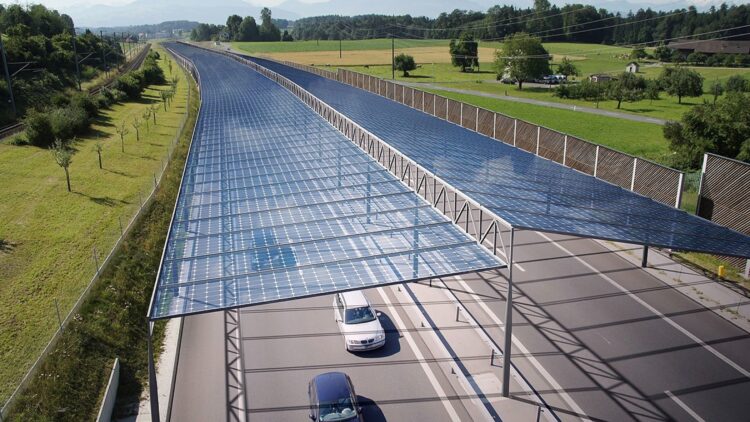A groundbreaking initiative proposes to cover America’s extensive highway network with over 52 billion solar panels, transforming road infrastructure into a massive source of renewable energy. This ambitious project, spearheaded by researchers from various prestigious institutions, aims to generate more electricity than the current demand of the United States. If successful, it could be a pivotal step in reducing global carbon emissions and altering how we approach energy production.
Driving towards sustainability: The system of solar panels along highways
Detailed in the study “Roofing Highways With Solar Panels Substantially Reduces Carbon Emissions and Traffic Losses,” researchers estimate that installing polycrystalline solar panels (each with a capacity of 250 watts) along over 19 million miles of global highways could yield approximately 17,578 terawatt-hours of electricity each year. This output is equivalent to over 60% of the world’s electricity consumption in 2023.
By leveraging solar energy in this innovative manner, the initiative has the potential to offset nearly 29% of the world’s carbon emissions, as well as decrease road traffic fatalities by as much as 11%.
Pilot projects have already begun in some countries. Researchers highlight that regions with favorable climate conditions and existing energy infrastructure—namely the U.S. East Coast, Eastern China, and Western Europe—are particularly suited for deploying solar panels along highways. These locations are identified as optimal due to their prospects for maximizing solar energy capture.
However, it must be emphasized that the broader implementation of this initiative is still in an exploratory phase at this time.
Assessing the advantages of a highway-based solar panel system
Nevertheless, the advantages of this project are manifold. It could substantially reduce reliance on traditional fossil fuels, resulting in a significant decrease in carbon emissions. With the capability to produce four times the annual energy output of the U.S., this project could reshape the global energy landscape. What’s more, the installation of solar panels on highways utilizes otherwise underused land, optimizing space for renewable energy generation.
Additionally, reducing traffic fatalities not only saves lives but also alleviates the economic burden associated with road safety. This dual benefit highlights the importance of incorporating renewable energy strategies into current road infrastructure, thereby boosting public safety alongside sustainability objectives.
Finally, integrating solar panels into the global highway network could lead to job creation in both the construction and maintenance sectors. As nations increasingly embrace eco-friendly solutions, this project marks a vital step toward a green future.
All in all, by harnessing existing infrastructure, we can improve energy efficiency while promoting environmental benefits—a win-win scenario for society.
Navigating the ecological and economic challenges that this solar panel project presents
Nonetheless, this project faces several challenges that need to be addressed to guarantee successful implementation.
The estimated construction costs are high, and securing funding will be crucial. Additionally, ongoing maintenance of this solar panel system will require a dedicated workforce and resources, which could potentially lead to logistical challenges.
Researchers also point out that the carbon footprint linked to the system’s construction could negate some environmental benefits in the short term, necessitating meticulous planning and execution.
Another challenge involves the varying climate conditions that may affect the panels’ efficacy across different regions. The research team stresses the importance of pilot projects to test and refine the technology before full-scale deployment. Navigating regulatory processes and securing public support will also be vital for the project’s success.
Despite these challenges, this solar panel highway project offers immense benefits. By focusing on innovative renewable energy solutions like this, we can ensure a sustainable future in America and beyond. Indeed, shifting to solar energy is crucial for a cleaner planet.

